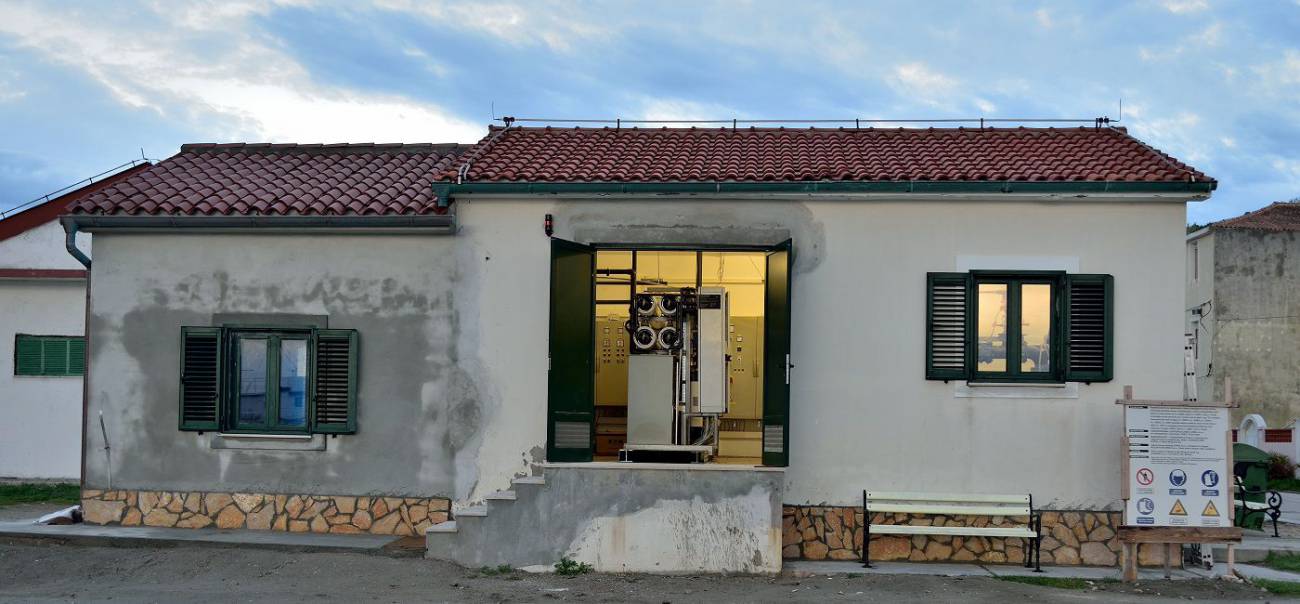Seawater desalination
Rainwater has traditionally been used as a source of potable water in littoral areas that are without freshwater. Increasing consumption meant that it was no longer possible to ensure sufficient surface areas for the collection of rainwater and tanks for its storage. But what they did have was the sea which is a nearly unlimited source of water. Because seawater is salty, it needs to be desalinated in order to be used as potable water.
Based on its basic reference in the preparation of potable water, Kolektor Sisteh was selected as the provider of the technology for seawater desalination for the preparation of potable water on the Croatian island of Susak. This is the second seawater desalination project for the company. The first project was a small container-based plant for the desalination of brackish water on the Jaz Beach in Budva, Montenegro.

Razsoljevalna naprava na otoku Susak
The island is located in the Adriatic Sea, south of Mali Lošinj, and has no water springs. The water supply system is charged from the potable water reservoir in the port. The water is occasionally transported to the reservoir from the lake of Vransko jezero on the island of Cres by the so-called "Water Carrier Boat" (Brod Vodonosac). The weaknesses of this method are the relatively high price and stale water. The local water distribution company has decided on desalination using reverse osmosis.
The desired capacity of the desalination plant facility on the island of Susak is 2 x 3,2 m3/h of potable water.
Seawater needs to be suitably prepared before it enters the reverse osmosis process. The desalination process encompassed the following phases:
- collection of seawater from the sea: collection pool below the surface of the sea which is connected to an underground reservoir in the desalination plant facility,
- pre-treatment: coagulation, settling, filtration through sand filters,
- filtration through absolute filters (10 5 μm)
- desalination: evolving high-pressure pump (18.5 kW, 80 bar, 10 m3/h) and membrane modules (3 in each of the 2 pressure tubes),
- remineralization: pH correction and partial rehardening (Ca, Mg),
- disinfection: through the addition of chlorine to prevent contamination in the water supply system.
 Naprava za reverzno osmozo na otoku Susak
Naprava za reverzno osmozo na otoku Susak
Following a technical inspection, they began releasing potable water into the water supply system. The water has a pleasant taste after remineralization, which is aided by the slightly higher amount of salt than we are used to in our potable water.
Back

